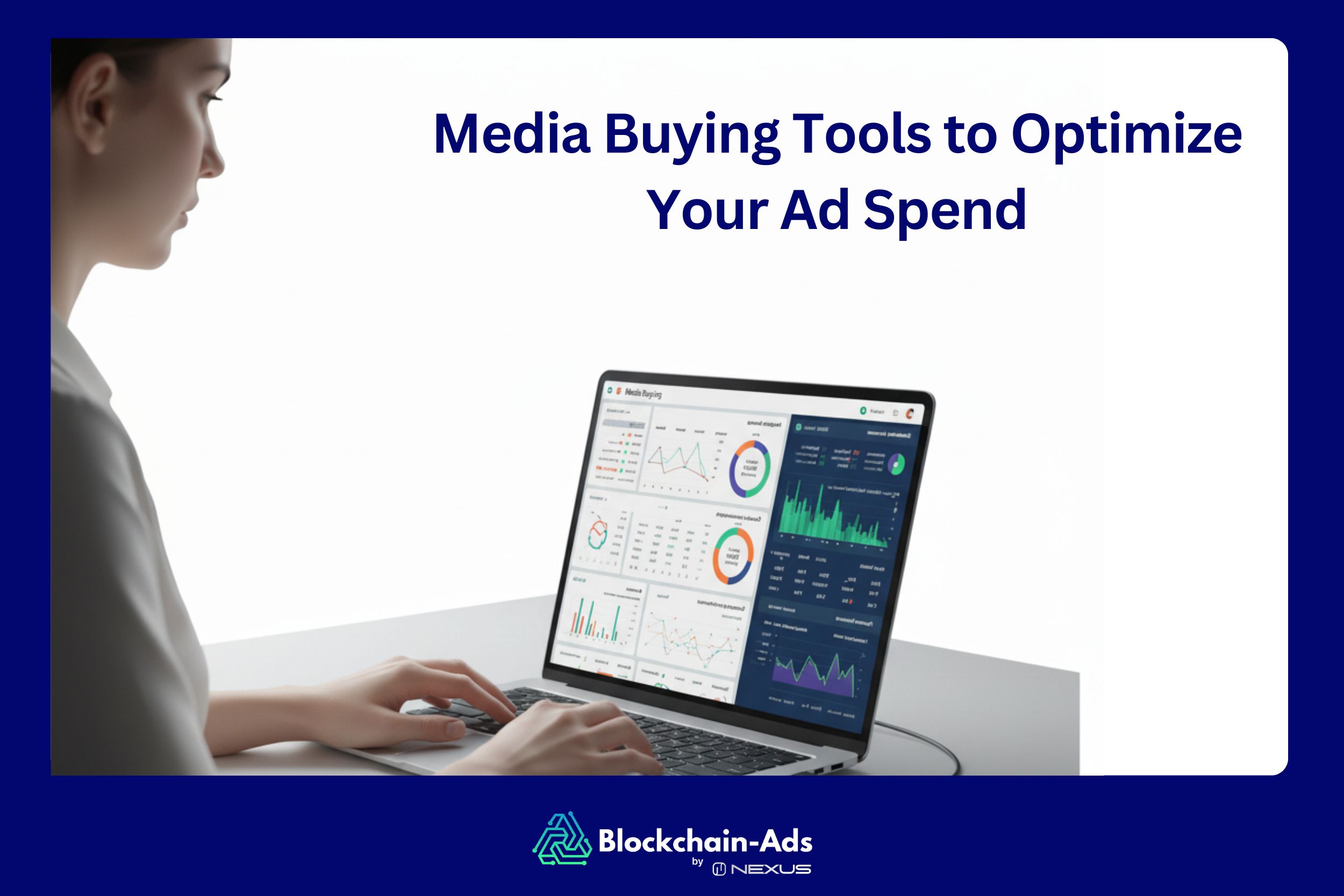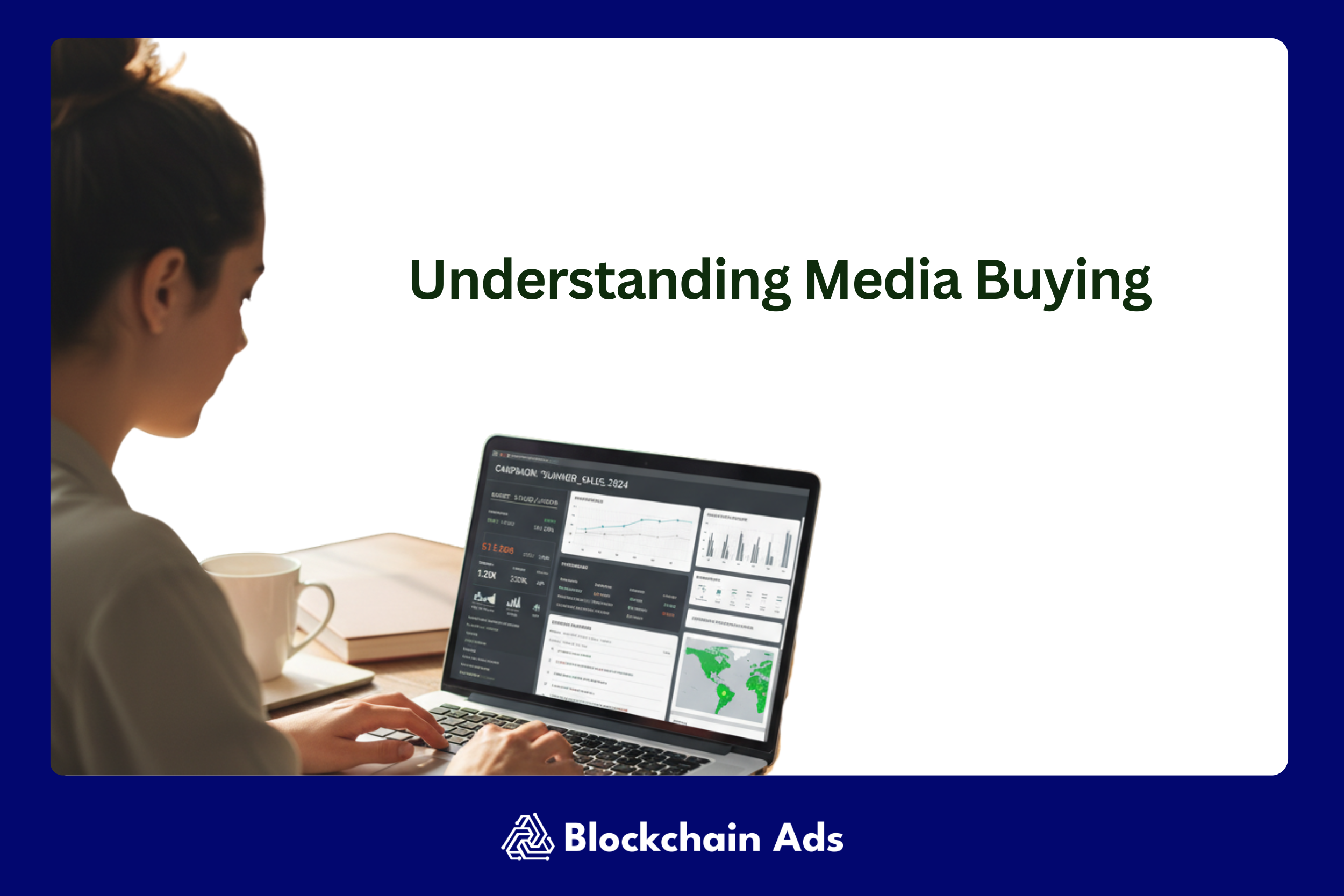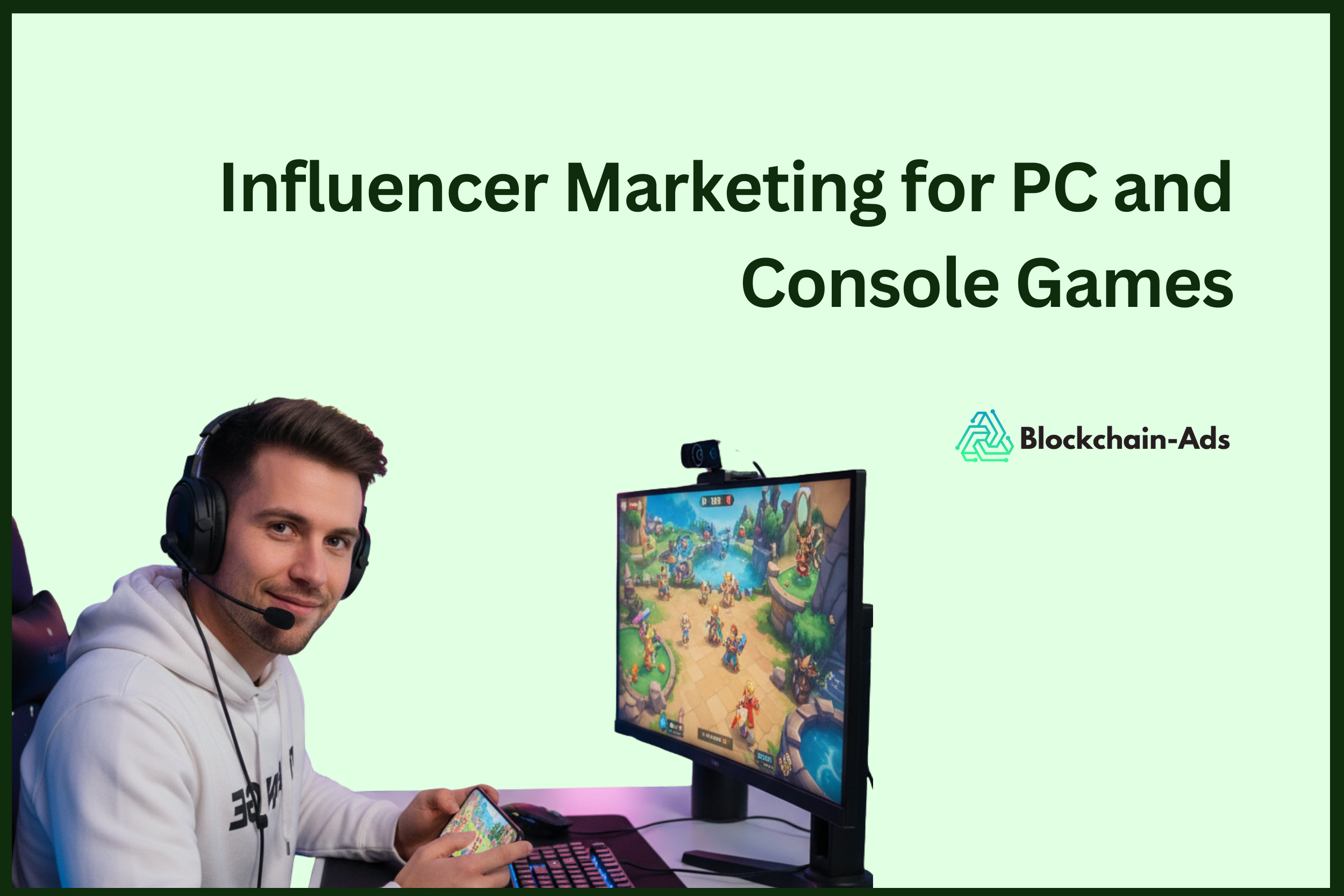Media Buying Tools: The Ultimate Guide to Optimizing Your Ad Spend
Heading
- Cointelegraph Formula offers various ad formats to 8 million monthly readers across 190+ countries, leveraging its trusted name in crypto.
Most of the money flowing through digital channels today is automated. In fact, 91% of all U.S. digital display ad spend in 2023 was programmatic, and this shows how deeply automation has changed how brands reach customers.
By 2026, the global programmatic ad spending is expected to hit $724.8 billion, showing how rapidly brands are considering a shift towards automated and data-driven media buying. Behind this transformation are media buying tools. These are the engines of successful programmatic advertising and marketing campaigns. They help power every impression, bid, and placement across digital platforms.
With media buying tools, advertisers can automate buying decisions, optimize spend in real time, and measure impact with precision. However, competition is intensifying as more brands adopt programmatic advertising, and evolving privacy regulations like GDPR and CCPA are reshaping targeting strategies. It's, therefore, important for advertisers to understand how to select and use the right media buying tools. This guide is actually a breakdown of what these tools do and why they matter.
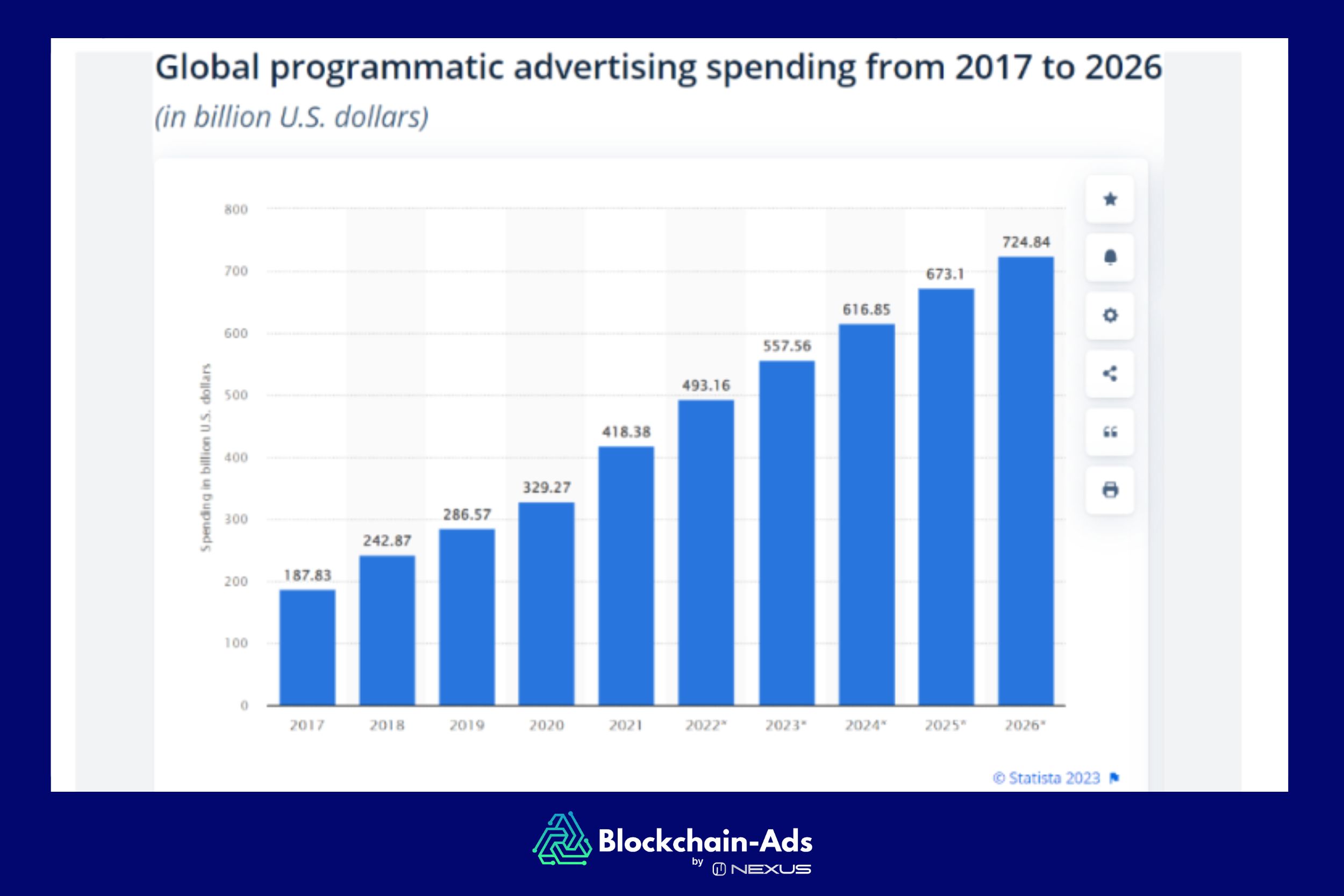
What Are Media Buying Tools?
Media buying tools are the technologies that help marketers purchase, manage, and optimize advertising placements. The tools handle functions such as audience targeting, bid optimization (automatically adjusting ad bids to maximize performance), campaign tracking, and real-time reporting. Examples are demand-side platforms (DSPs) like Blockchain-Ads or ad managers such as Google Display and Video 360.
Why Choosing the Right Media Buying Tools Matters
Undeniably, the difference between an average campaign and a profitable one often comes down to the tools behind it. In digital advertising, precision is power. And media buying tools are the engines that turn strategy into measurable success.
When these tools are selected wisely, they can help improve ROI. In fact, global digital ad spending is forecasted to rise 7.4% to reach 1.17 trillion in 2025. Yet nearly 26% of that budget is still lost to inefficient placements and ad waste. Advanced media buying platforms usually help close that gap.
Furthermore, there is targeting precision. Traditional demographic filters today are no longer enough in a world where attention shifts by the second. Tools powered by AI and first-party data mapping can now segment users. This is, of course, by behavioral triggers, wallet activity, and even in-app actions.
Besides, the right media buying tools are budget-efficient. A 2024 IAB report revealed that brands using automated media buying software reduced cost-per-acquisition (CPA) by an average of 37%. They also cut campaign waste by 18% within the first quarter of adoption. Platforms like Blockchain-Ads are specifically designed to deliver these efficiencies through AI-powered bid optimization and real-time budget allocation across multiple channels.
Types of Media Buying Tools Explained
Below is a breakdown of the main categories of media buying tools that drive today’s high-performing ad strategies.
Demand-Side Platforms (DSPs) – Automated programmatic buying across exchanges.
Demand-side platforms are the ground of programmatic advertising. The systems automate ad buying across multiple exchanges in real time. They evaluate millions of impressions per second, analyze audience data, and bid on the most valuable opportunities. For instance, platforms like Blockchain-Ads combine advanced AI-driven optimization with regulatory compliance features, helping advertisers navigate GDPR, CCPA, and other privacy frameworks while maximizing campaign performance.
Social Media Ad Platforms – Native buying tools for Facebook, LinkedIn, TikTok, etc.
Social platforms have transformed into self-contained ad spaces with native buying tools. This gives advertisers direct access to highly engaged audiences. Facebook Ads Manager, TikTok Ads, and X Ads all enable campaign creation, targeting, and optimization within their environments.
Search Engine Marketing Platforms – Google Ads, Microsoft Advertising for SEM buys.
Search engines remain one of the most reliable performance channels in digital media buying. Platforms such as Google Ads and Microsoft Ads allow brands to capture demand as it happens. This ultimately reaches users when they’re searching for a product or service.
Retail Media Networks – Amazon DSP, Walmart Connect, leveraging first-party shopper data.
Retail media is one of the fastest-growing frontiers in advertising, which is powered by first-party shopper data. Giants such as Amazon DSP, Walmart Connect, and Target Roundel allow brands to reach consumers at the moment of purchase intent. Of course, within the same ecosystem where conversion happens.
Analytics & Measurement Tools – Attribution and performance dashboards like Google Analytics.
Accurate measurement makes the media buying strategy complete. Analytics platforms such as Google Analytics and Adobe Analytics act as the compass that helps keep campaigns aligned with business goals. They basically track user journeys, attribute conversions, and evaluate which channels deliver the strongest return.
DSPs like Blockchain-Ads take this further by embedding real-time performance dashboards directly into the platform, with blockchain-verified attribution that tracks not just clicks and conversions, but verifiable on-chain transactions. This eliminates discrepancies between ad spend and actual user behavior, giving advertisers unprecedented transparency into campaign performance.
Top 15 Media Buying Tools for 2025
These top DSP cover everything from media buying and analytics to data visualization and campaign optimization. Their goal is to help you plan smarter and act faster.
Blockchain-Ads DSP
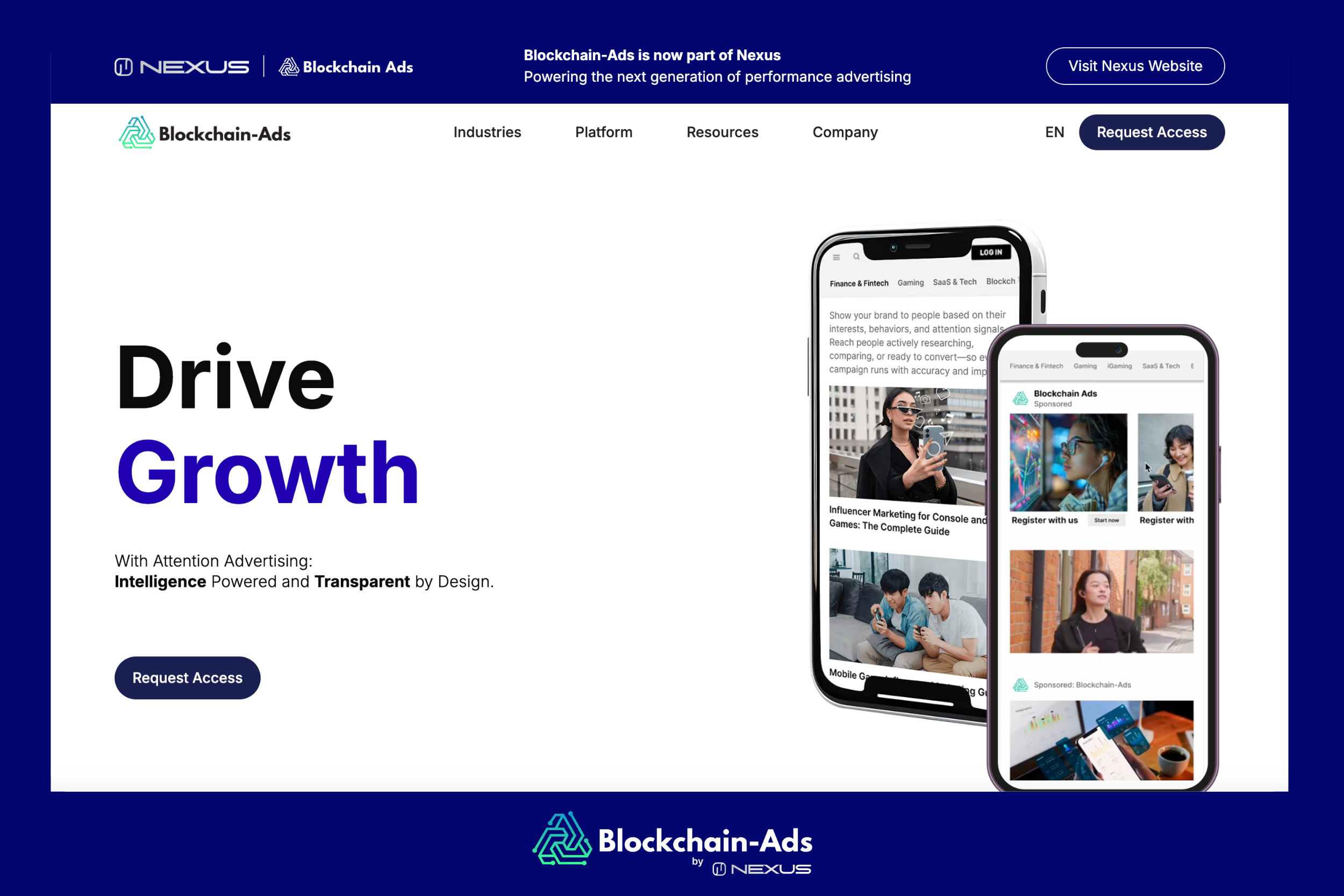
Blockchain-Ads is a third-generation media buying software focused on the regulated Industries. It offers transparency, precision, and control powered by deep audience insight. Advertisers can benefit from strong alignment with their campaign objectives to reach the right users at the right time.
The best part is that Blockchain-Ads enables you to optimize your campaign in real-time. It’s easy to see the audience segmentation, ad creatives, and which publishers are doing well. This ultimately helps you ignore underperformers and scale the ones performing their best as the campaign runs.
Google Display & Video 360 – Integrated with Ads & Analytics.

Google Marketing Platform has Display & Video 360. DV360 integrates smoothly with Google Analytics as well as other products available on Google. It’s a great media buying tool, thanks to five modules. You can build your campaign, manage your creative assets and audience, access ad inventory from top publishers, and analyze your data. DV360 also provides automated bidding. It also offers custom targeting using first and third-party data, and this helps you reach the right audience.
The Trade Desk – Broad channel access, advanced targeting.
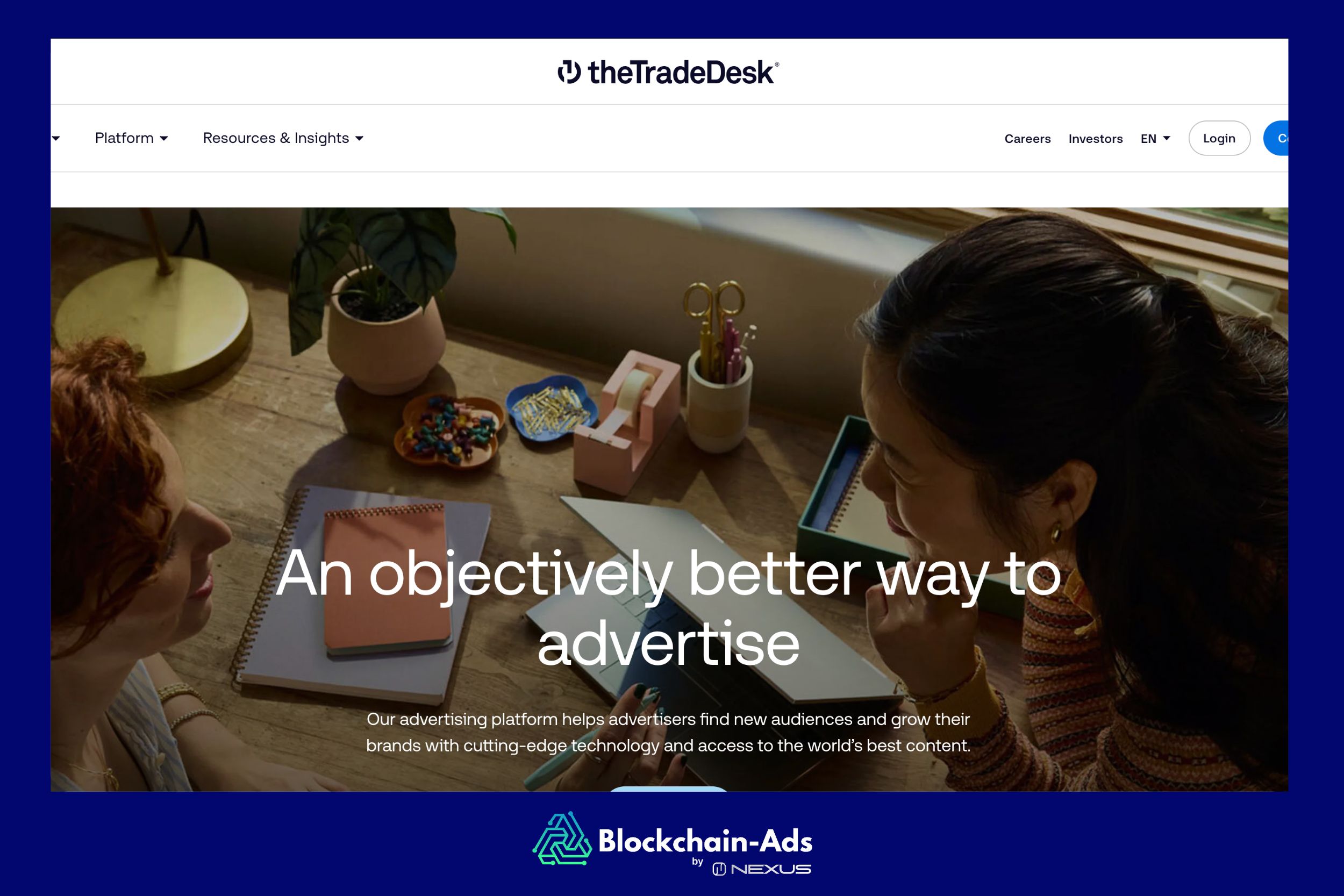
You can get access to premium publishers through the Trade Desk. The platform boasts ad inventory from top publishers such as ABC, ESPN, Spotify, and The Wall Street Journal. One of the best features available is the AI-driven ‘’Koa’’. It uses data from billions of daily queries to evaluate the best and most economical method to run your digital campaign. Besides, the tool has cross-device targeting abilities that optimize campaign reach. You can consider the Trade Desk if you want to run large-scale campaigns.
Amazon DSP – Shopper data-driven display, video, audio ads.
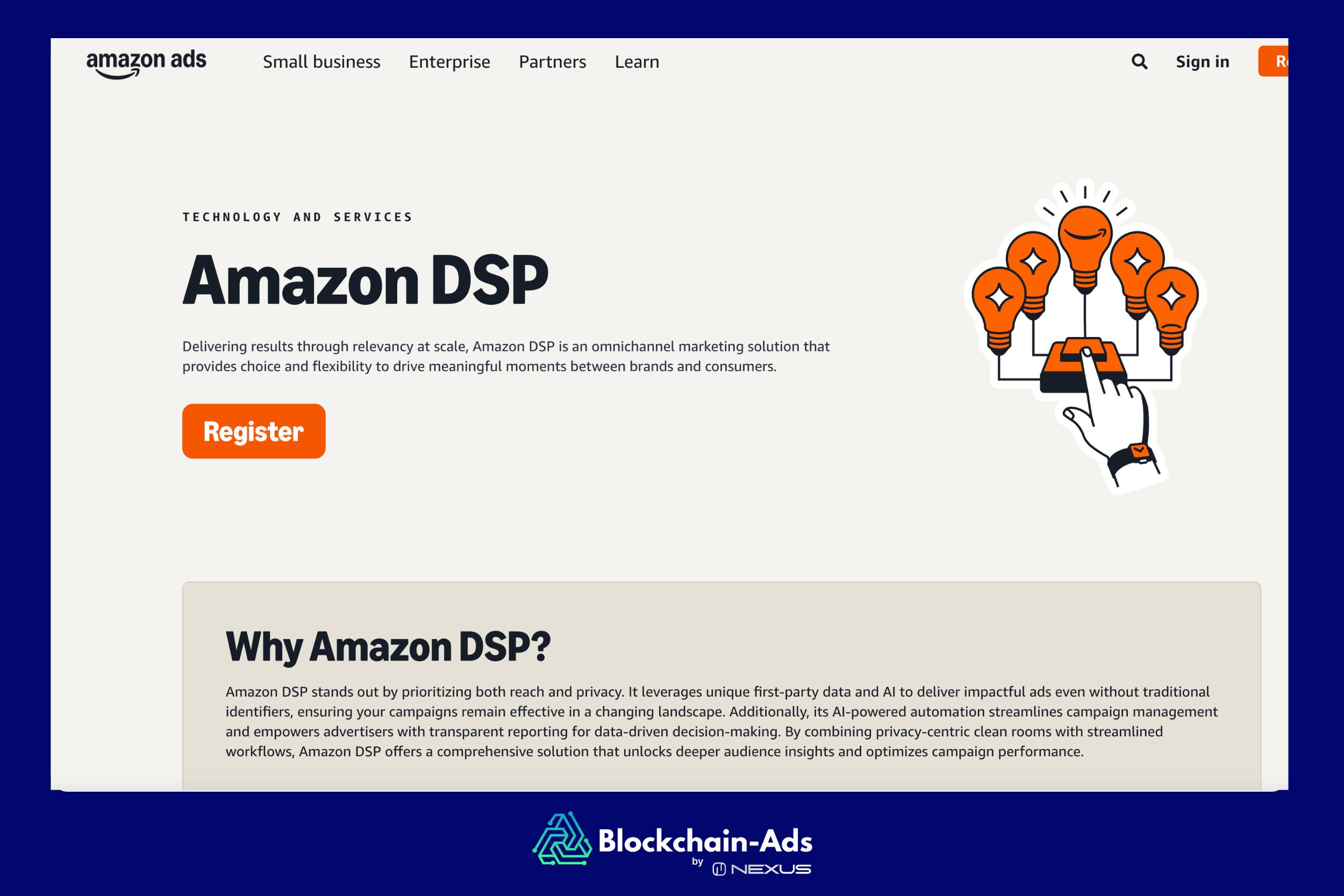
Amazon DSP is one of the top three DSP platforms that allows ads to appear on Amazon-owned sites such as IMDb and Audible. Ads can also appear on Amazon-connected devices like Kindle, Fire TV, and Alexa. This gives marketers many opportunities to appear in front of the right people. Furthermore, Amazon DSP allows targeting based on searches, purchase history, and views. The tool is best for product-focused businesses because it uses Amazon’s consumer data, which is outstanding for e-commerce.
Adobe Advertising Cloud – Unified planning & buying with the Adobe stack.
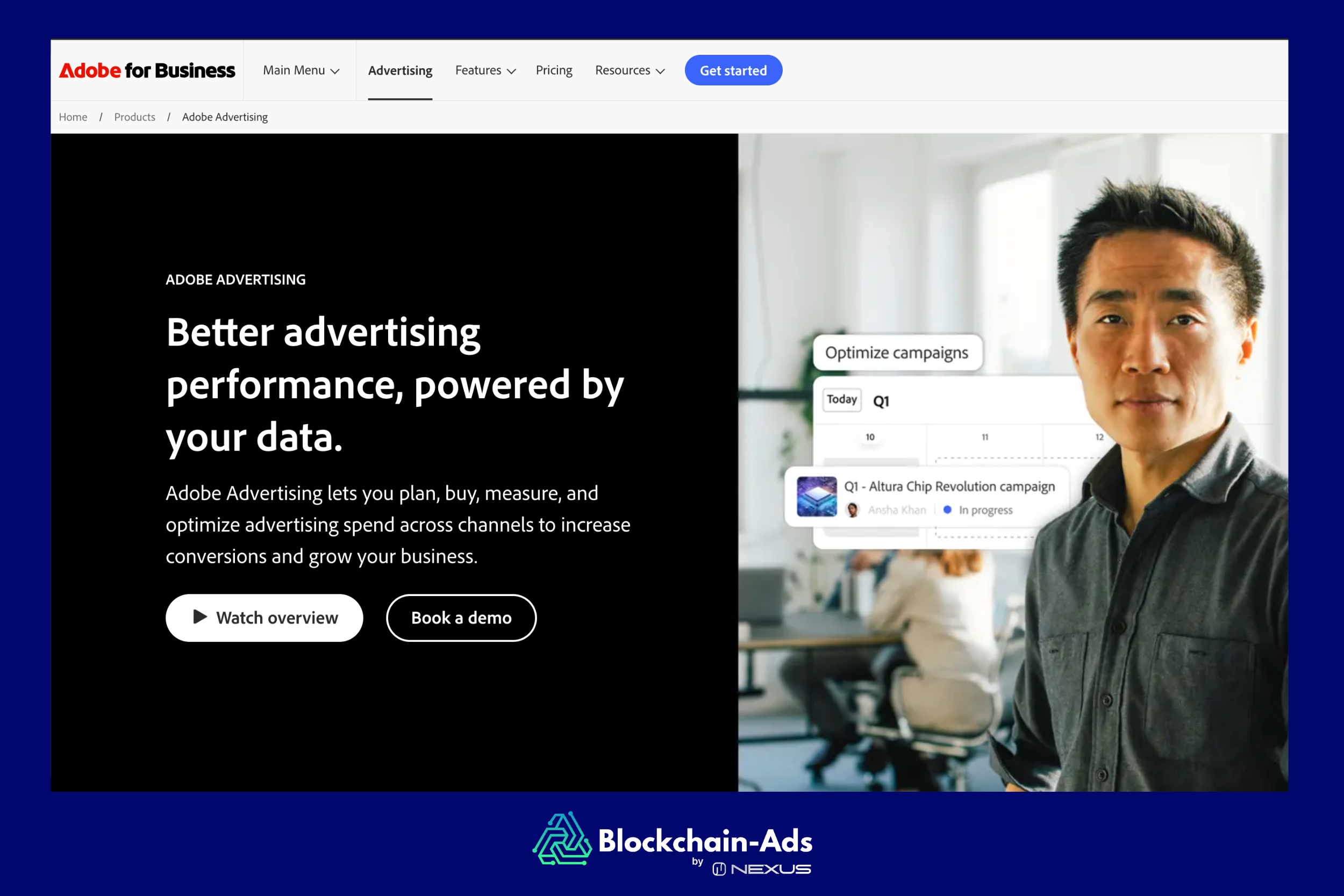
Similar to Google, Adobe’s platform will integrate smoothly. This makes cross-data analysis simpler and collaboration easier. Adobe also has powerful performance optimization features that help maximize return on ad spend (ROAS). Adobe is best for unified planning, creative, and analytics. Marketers can connect audience insights and execute campaigns across display, video, and search.
Basis (Centro) – Self-serve programmatic, search, social, CTV.

Basis boasts one of the largest inventories in the market. It unites ad channels into one interface and covers search, social, and CTV campaigns. Besides, it has an AI tool that can help review more than 30 campaign parameters and analyze data automatically using either machine learning or algorithms. Basis also features scalable tools, making it perfect for both large and small businesses.
Mediaocean – Workflow automation, financial tracking.
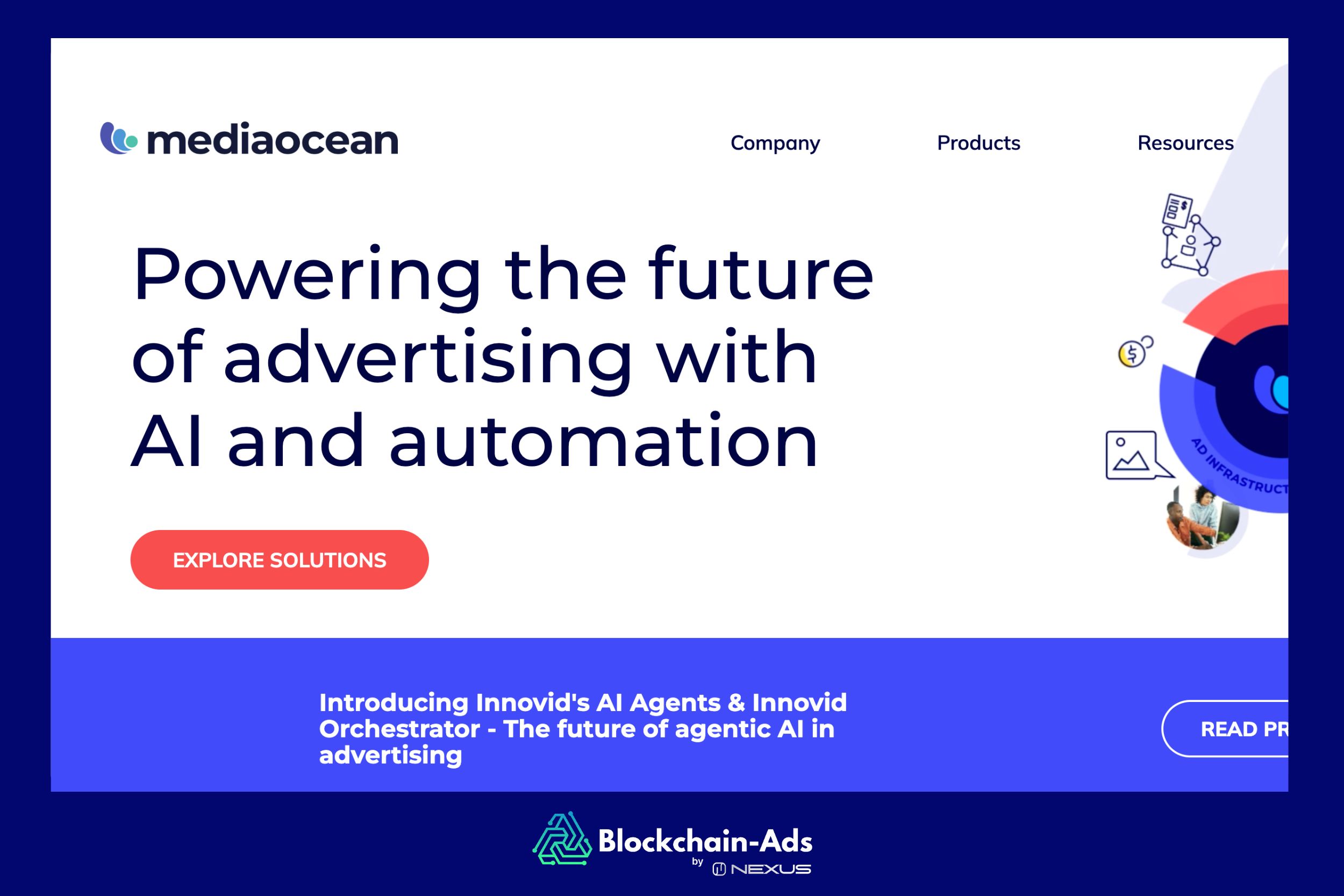
This platform offers omnichannel advertising space for managing campaigns across formats, channels, and devices. Mediaocean consolidates ad tech, workflow, and infrastructure to provide advertisers control over global media and creatives. Its biggest solutions include ad serving, workflow automation, social and connected TV activation, and financial management.
Mediatool – Centralized planning, reporting, collaboration.

Mediatool is a collaborative marketing tool that helps centralize media planning, reporting, and collaboration for companies. Its centralized dashboard improves communication between media buyers and media planners. This helps ensure there is alignment across advertising campaigns. The platform integrates with other systems to enhance team collaboration and data consistency. Mediatool is ideal for mid-size to large companies with complex advertising needs. It’s also best for brands with multiple agencies.
Sprinklr – Real-time social listening for rapid optimization.

Being an AI-powered social listening platform, Sprinklr enables businesses to integrate social listening, publishing, and ad buying. Its AI identifies sentiments and trends across millions of conversations, and this allows brands to react in real time.
Nielsen Media Impact – Cross-platform performance forecasting.
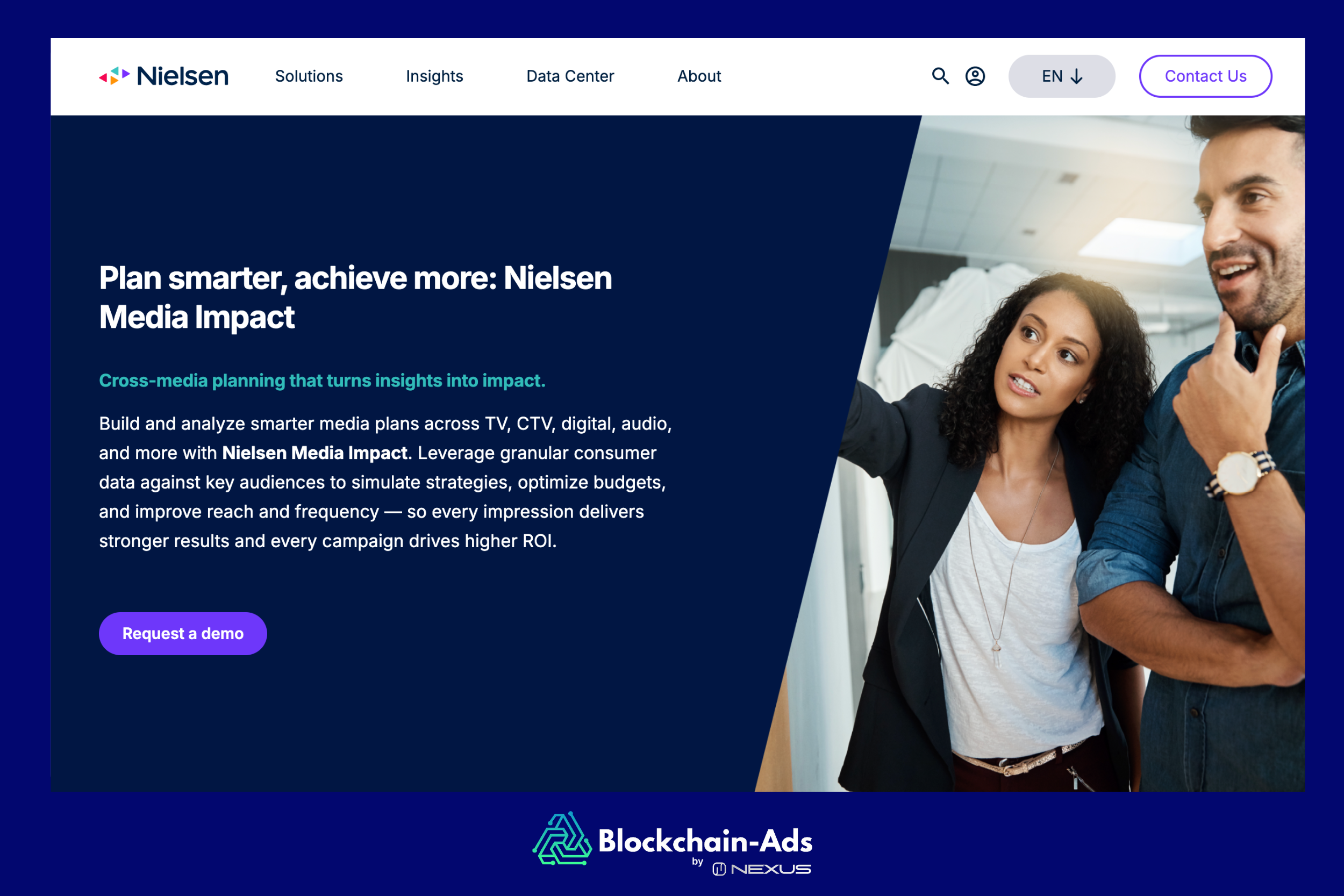
This media buying tool is famous for its cross-platform measurements. Its forecast tools help advertisers develop efficient media plans by showing audience overlap across platforms like CTV, TV, audio, digital, and more. Every campaign with Nielsen drives high ROI, plus each impression brings stronger results.
Comscore – Cross-device digital analytics and audience measurement.

Comscore does wonders in digital analytics. It offers marketers broad metrics about online usage behaviors across devices. This is done by tracking engagement across devices, browsers and OTT platforms. So advertisers can easily verify reach and viewability.
Kantar Media Planning Suite – Audience insights + competitor benchmarks.

Kantar is a strategic set of tools for advertisers and agencies. It offers audience insight and competitor benchmarks to optimize media plans. Kantar’s extensive publisher partnerships also allow marketers to test the most common paid digital ad formats like YouTube, X, Facebook, and TikTok.
Similarweb – Competitor traffic analysis and journey mapping.

This tool shows how competitors attract traffic and where audiences usually spend time online. It offers features such as keyword research, website analysis, custom topics, and SEO tools. This insight helps refine bidding strategies. It also identifies high-value publishers or placements that others may overlook.
Amobee – Real-time activation and cross-channel optimization.

Amobee allows designing digital campaigns across digital and TV. The tool identifies consumers on an individual-by-individual level using their proprietary identity graph. When using this media buying tool, brands can forecast their campaign’s performance across different channels and devices. The platform can still access APIs from social channels such as Instagram and Facebook for social campaign automation.
Commspoint Influence – AI-driven channel mix recommendations.
Working under Nielsen, the Commspoint Influence tool will show you where to place your message for the biggest impact. It analyzes how various media work together and uses survey data to develop reach. Its key features include a user-friendly interface and its ability to align with campaign objectives.
DSP Comparison Table: Top 10 Media Buying Tools (2025)
How to Choose the Best Media Buying Tool for Your Business
If you explore all the above media buying tools, it can be easy to get overwhelmed by many features. However, you need to remember that the right choice is the one that aligns with your data needs, workflow, and budget capacity. Here’s how to evaluate your options effectively:
Define your campaign goals
Before selecting a media buying platform, start with strategic clarity. Define your campaign objectives upfront—whether you're prioritizing brand awareness, direct conversions, lead generation, or omnichannel growth. Ask yourself; Are you looking to scale reach or maximize efficiency and do you need cross-platform campaign management or deep expertise in one channel?
You need to know what KPIs will define success—impressions, clicks, conversions, or customer lifetime value. Platforms like Blockchain-Ads simplify this process with objective-based campaign builders, automatically optimizing targeting based on whether you're focused on awareness, traffic, sign-ups, or conversions.
Evaluate data integration
Your media buying platform should plug smoothly into your existing options. Always consider CRM systems, analytics dashboards and DMPs. Tools like DV360 offer strong API connectivity to help unify performance data across programmatic, search, and social channels.
Access team skills
Always consider a platform with an intuitive interface, learning resources, and responsive support. Otherwise, it will be useless if your team can’t operate it effectively. Look for platforms that offer intuitive interfaces and automated targeting. Blockchain-Ads, for example, uses AI-powered automated targeting that analyzes your landing page content and campaign objectives, reducing the technical burden on your team while maintaining performance.
Check your data sources and targeting integrations
The quality of your ad performance highly depends on the data powering your targeting. Consider tools that support first-party and contextual data, especially now that third-party cookies are continuously fading out. DSPs like Blockchain-Ads are specifically built to excel in cookieless environments, offering advanced contextual targeting and privacy-compliant audience segmentation.
Budget realistically
Don’t solely compare subscription fees. You need to consider the total cost of ownership, including onboarding, integrations, and data usage. Advanced DSPs can deliver significant performance gain, but only if they fit your operational scale. The thing when considering budget is to spend no more than 10-15% of your total media budget on tools and technology.
The 70/20/10 Rule in Media Buying

Nowadays, where marketers juggle multiple channels, formats, and technologies, structure is everything. That’s where the 70/20/10 rule comes in. Usually, roughly 70% of your budget should go toward proven and high-performing channels. These are the ones with track records of delivering great results. This portion helps keep your performance consistent and ROI stable.
Next, it’s important to allocate 20% to emerging platforms or tactics. These are basically the new frontiers, like connected TV (CTV), programmatic audio, or retail media networks. They are not yet the biggest revenue drivers, but they offer growth opportunities.
Finally, secure 10% for experimental media and innovation. This is your testing ground. It’s a small but crucial investment in discovering what’s next.
Common Media Buying Mistakes and How to Avoid Them
In some cases, even the best campaigns can fall short when execution missteps pile up. Here’s a list of the common pitfalls and how to avoid them.
Future Trends in Media Buying Tools
The media buying field is transforming faster than ever. This is driven by new technologies, changing privacy standards, and growing demand for transparency. Here are some of the most common trends shaping the future of media buying tools.
AI-Driven Optimization and Predictive Analysis
Artificial intelligence is currently the center engine of modern media buying. In 2025, over 78% of global advertisers report using AI-powered tools to optimize campaigns (Digital Agency Network, 2025). They’re also predicting audience behavior, recommending creative variations, and forecasting campaign outcomes even before launch. Soon, AI in advertising will be able to identify shifts in media performance and reallocate budgets in real time without human input.
The Shift Toward Cookieless Targeting
The Web is increasingly becoming decentralized, making blockchain data a powerful target layer. Some media tools like Blockchain-Ads are enabling wallet-based audience targeting using on-chain behavior. This is giving advertisers privacy-safe insight into user interests without relying on cookies. Soon, this approach will become the new norm. Marketers will need to rely on first-party, contextual, and on-chain data to understand their audiences.
CTV Integration
Global connected TV advertising spend is projected to exceed $38 million by 2027. This is making media buying tools evolve to match that growth. Expect to see tighter integration between programmatic dashboards and CTV inventory. It will allow advertisers to buy display, mobile, and streaming placements in one flow. Platforms like Amazon DSP and DV360 are already leading in this push.
The Growth of Retail Media Networks (RMNs)
Retail giants like Amazon, Walmart, Target, and more are transforming into full advertising spaces. RMNs combine shopper data, intent signals, and closed-loop attribution, and this makes them one of the fastest-growing channels in 2025. eMarketer 2025 predicts that U.S. retail media ad spend will surpass $61 billion this year, almost outpacing social media growth. Media buying tools are adapting to this by integrating RMN APIs directly. So, brands can buy across Amazon DSP, Walmart Connect, and other networks from a single platform.
Conclusion: Optimize Your Media Strategy with the Right Tools
Great media buying is not only about spending smarter—it’s all about seeing further. The right tools will turn raw data into direction, automate the heavy work, and reveal where your audience truly moves. And in a space shaped by AI and privacy shifts, brands that stay curious, agile, and insight-driven will always outsmart those chasing trends. For advertisers in regulated or high-growth industries, specialized platforms like Blockchain-Ads offer the compliance, transparency, and AI-powered optimization needed to compete at enterprise scale. Explore case studies to see how brands are achieving measurable ROI with next-generation ad tech."
Qualify and get acess to Blockchain-Ads
Lorem ipsum dolor sit amet, consectetur
Quick Definition

Talk with some of our current partners
View all success stories.webp)

Reach 12M+
Engaged Web3 users across 10,000+ websites and 37 blockchains.






.png)


